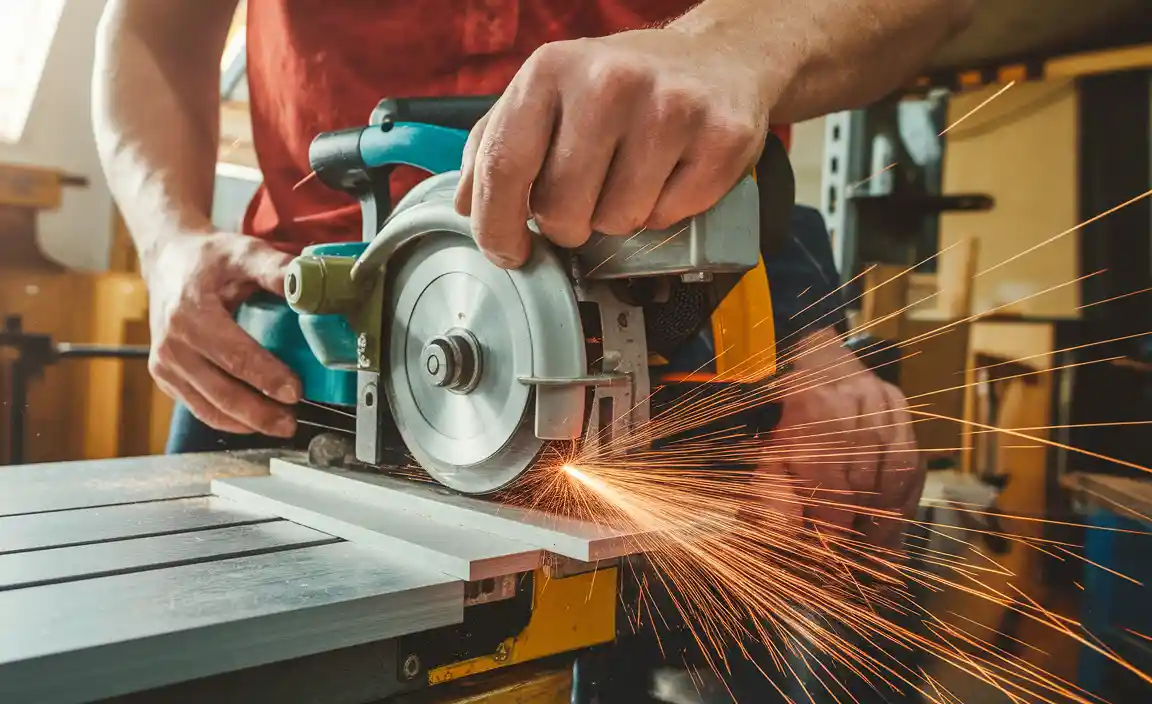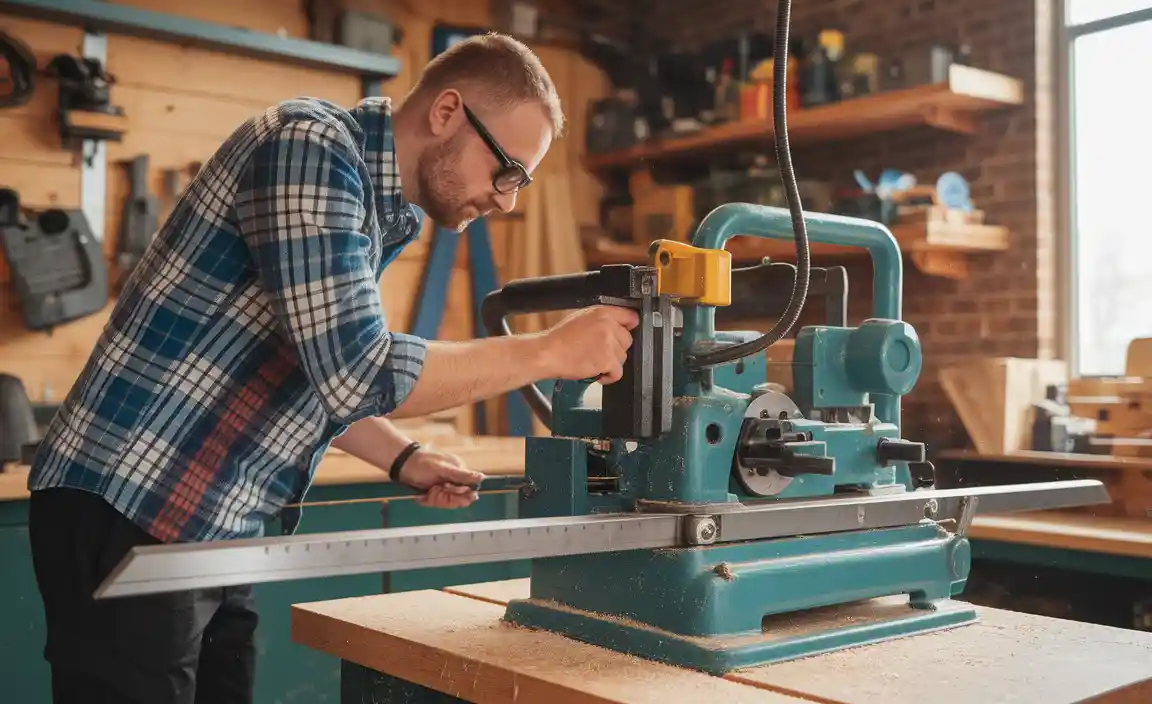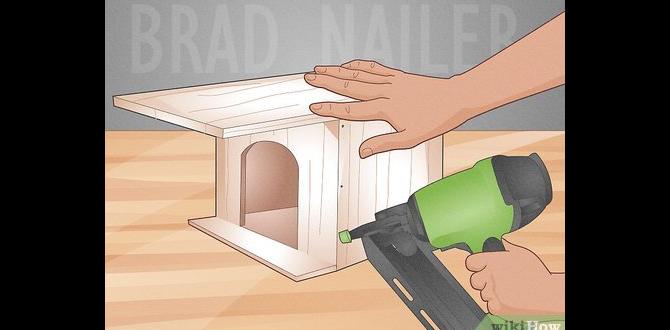Maintaining your bandsaw can feel like a chore, but it doesn’t have to be. Imagine cutting through wood with ease and confidence. That’s what proper maintenance can do for you! A simple bandsaw maintenance checklist can change the way you work.
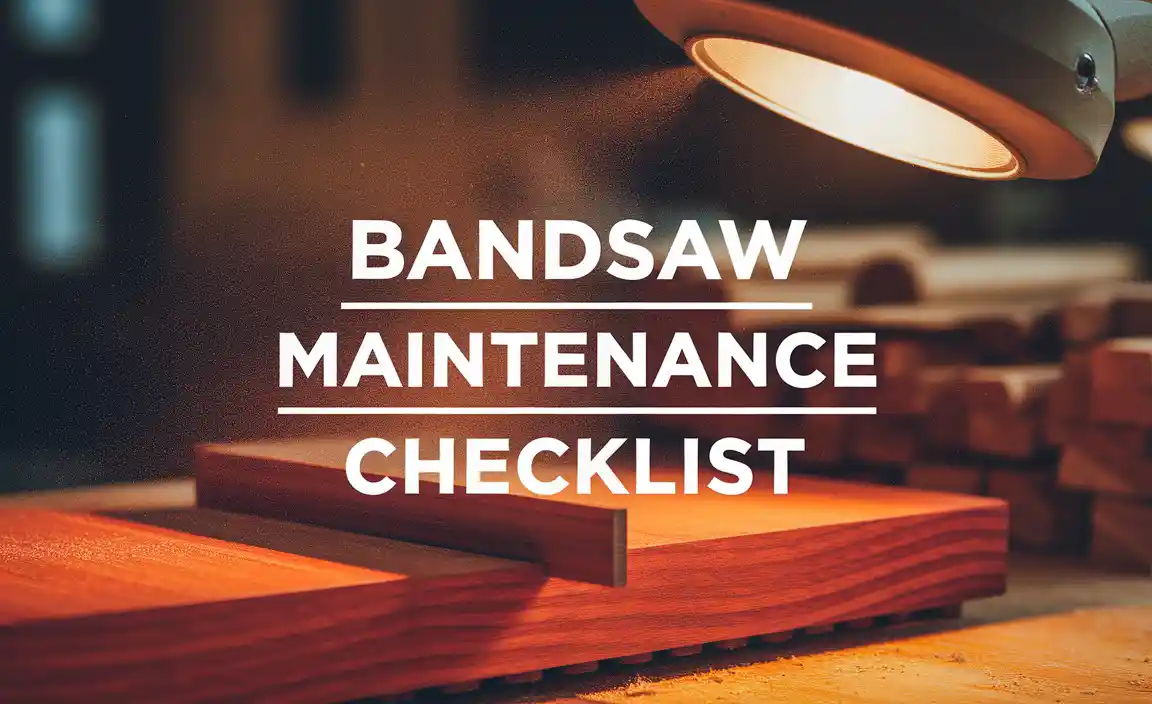
Have you ever had your bandsaw misbehave in the middle of a project? It can be frustrating! Regular checkups help prevent those surprises. Think about it: would you drive a car without checking the oil? Your bandsaw deserves the same care.
Here’s a fun fact: did you know that a well-maintained bandsaw can last for years? With a good checklist, you can keep your tool in top shape. This article will guide you through essential steps to create that checklist. Let’s dive in and keep your bandsaw running smoothly!
Table of Contents
Essential Bandsaw Maintenance Checklist: Keep Your Tool Sharp
Keeping your bandsaw in top shape is vital for safety and performance. A maintenance checklist helps you remember key tasks. Check the blade tension regularly to avoid breakage. Clean the wheels to ensure smooth operation. Also, inspect the guides and bearings for wear. Did you know that simple maintenance can extend your bandsaw’s life? Spending a few minutes on upkeep can save money and prevent accidents. Make this checklist part of your routine for the best results!
Understanding the Importance of Bandsaw Maintenance
Importance of regular maintenance for safety and performance. Consequences of neglecting bandsaw upkeep.
Regular upkeep is key for bandsaws. Safety and performance improve when tools are well-maintained. Neglect can lead to accidents or poor cuts. A rusty blade might break, causing injuries. Machines that lack care run less smoothly. Following a bandsaw maintenance checklist helps prevent these issues.
- Ensure blade sharpness
- Keep the wheels clean
- Check for worn parts
With good maintenance, you work safer and more efficiently. Why risk your safety? Take care of your bandsaw!
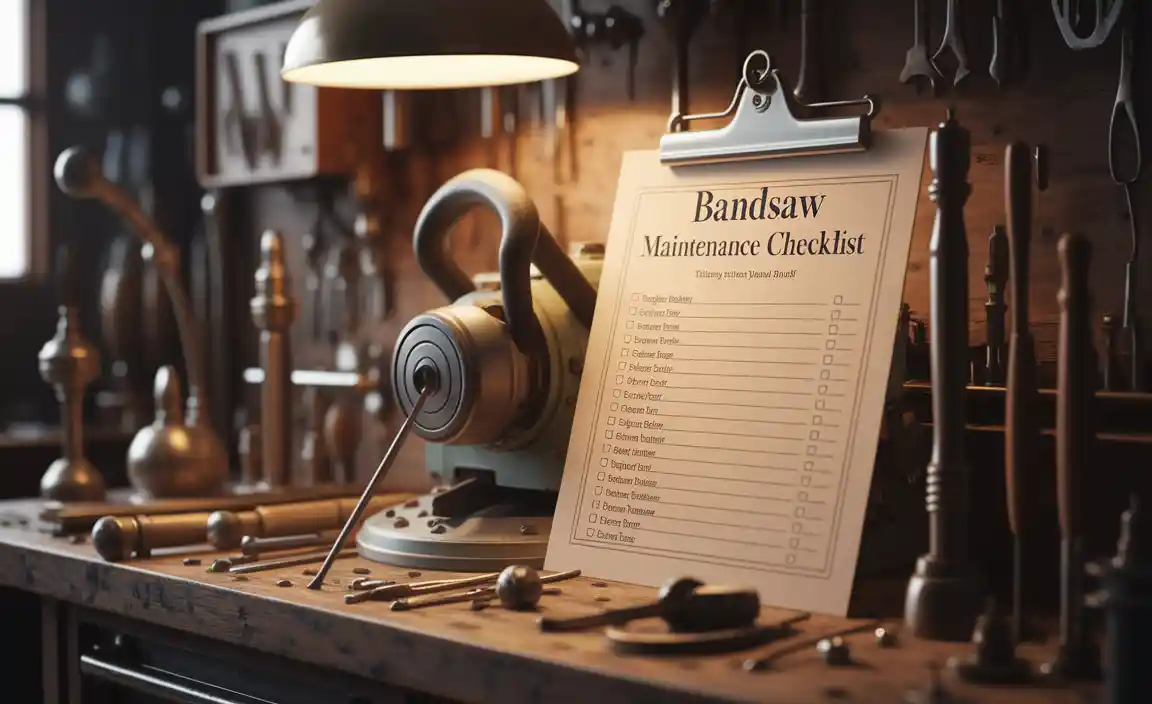
Why is bandsaw maintenance important?
Regular bandsaw maintenance keeps you safe and ensures better performance. Neglect can lead to dangerous problems, like broken blades or less accurate cuts.
Daily Maintenance Tasks
Checking blade tension and alignment. Inspecting the work area for debris and safety hazards.
Every day is a chance to keep your bandsaw happy and healthy! Start by checking the blade tension. A loose blade can go wild like a puppy chasing its tail. Next, make sure your blade is aligned correctly. An aligned blade cuts straight, while a misaligned one might take you on a wild adventure! Don’t forget to look around your work area. Pick up any debris and clear away safety hazards. A tidy space is a happy place!
| Task | Description |
|---|---|
| Blade Tension | Ensure the blade is tight enough to avoid wonky cuts. |
| Blade Alignment | Check that the blade runs straight for smooth slicing. |
| Work Area | Clear away debris and dangers to prevent accidents. |
Weekly Maintenance Tasks
Cleaning the blade and guides. Lubricating moving parts to reduce wear.
Keeping your bandsaw in good shape is important. Start by cleaning the blade and guides every week. Dust and wood chips can build up, making cuts messy. Next, be sure to lubricate moving parts. This helps reduce wear and keeps everything running smoothly. A little oil goes a long way in making your bandsaw last longer! Regular care keeps your tool safe and effective.
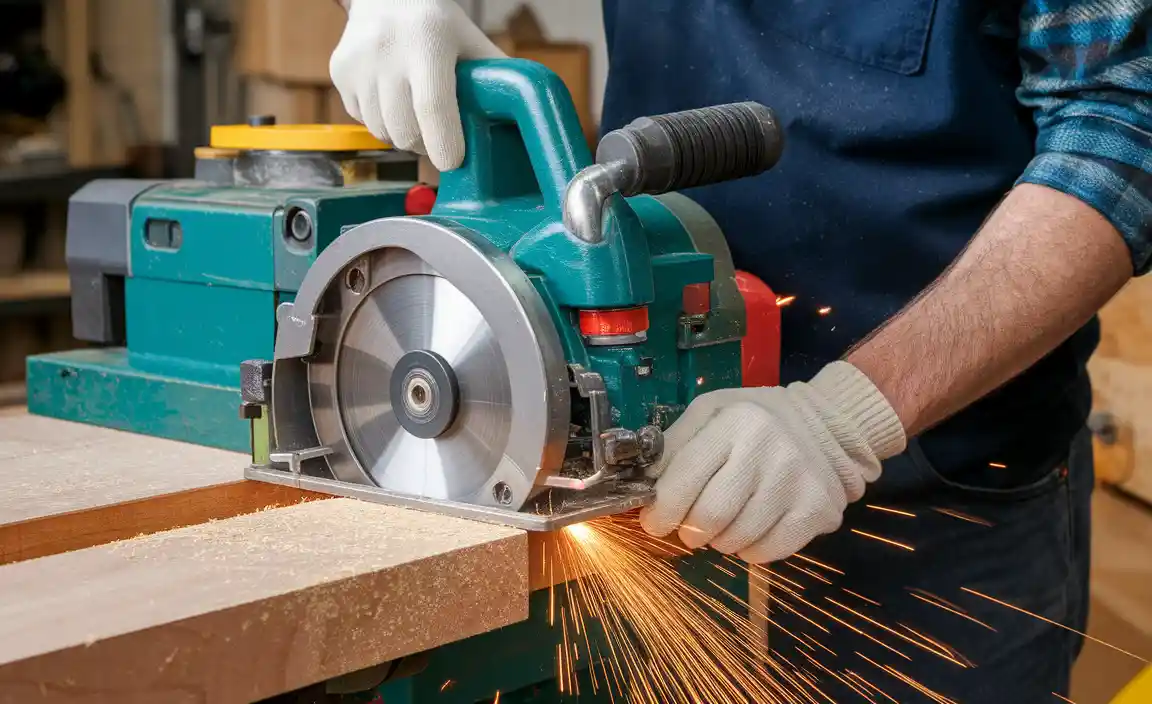
Why is cleaning the blade important?
Cleaning the blade prevents rust and keeps cuts sharp, which is essential for safety.
Weekly Maintenance Tasks:
- Wipe down the blade with a soft cloth.
- Apply lubricant to the wheels and guides.
Monthly Maintenance Tasks
Inspecting and replacing wornout blades. Tightening bolts and checking for loose components.
Every month, check your bandsaw for smooth sailing. First, look for worn-out blades. A dull blade is like a sleepy sloth; it just won’t cut it! If it’s time for a new one, don’t be shy. Next, make sure to tighten those bolts. Loose parts are like wobbly chairs—no one wants to sit on them! Keeping everything snug ensures your bandsaw runs safely and efficiently. To help keep track of these tasks, use this handy checklist:
| Task | Status |
|---|---|
| Inspect blades | ✔️ |
| Replace worn blades | ✔️ |
| Tighten bolts | ✔️ |
| Check for loose components | ✔️ |
Quarterly Maintenance Tasks
Comprehensive inspection of electrical systems. Checking motor performance and cleaning dust collectors.
Every three months, it’s time for a quick check-up on your bandsaw. First, take a good look at the electrical systems. Loose wires can cause problems faster than you can say “sawdust!” Next, examine motor performance. If it’s grunting like an old bear, it might need some TLC. Don’t forget to clean the dust collectors; they must be as pristine as your grandma’s kitchen for safe operation!
| Task | Description |
|---|---|
| Electrical Systems | Inspect wires, plugs, and connections for damage. |
| Motor Performance | Check for unusual sounds or vibrations. |
| Dust Collectors | Empty and clean to ensure efficient dust removal. |
Annual Maintenance Tasks
Professional servicing recommendations. Reviewing and updating safety protocols and training.
Keeping your bandsaw in tip-top shape is essential for safety and performance. Every year, it’s smart to call in the pros for some professional servicing. They’ll give your bandsaw a thorough check-up, ensuring it’s ready for all your cutting needs. Also, don’t forget to review and update your safety protocols. Train everyone on the proper use of the bandsaw. Remember, safety first—nobody wants to lose a finger while trying to cut cake!
| Task | Recommendation |
|---|---|
| Professional Servicing | Schedule yearly check-ups to keep everything running smoothly. |
| Safety Protocols | Review and refresh safety training regularly. |
Common Bandsaw Problems and Solutions
Identifying and troubleshooting common issues. Maintaining records of maintenance and repairs for efficiency.
Have you ever noticed your bandsaw making strange noises? Or maybe it’s not cutting straight? These are common issues that can happen. First, check the blade tension. If it’s too loose, the saw might waddle like a duck! Keep track of any repairs in a simple logbook. This helps you spot patterns and fix problems faster. Remember, a well-maintained bandsaw is a happy saw!
| Problem | Solution |
|---|---|
| Blade not cutting straight | Check blade alignment and tension |
| Strange noises | Inspect bearings and lubricate |
| Frequent blade breakage | Replace worn blades, check settings |
Final Tips for Effective Bandsaw Maintenance
Best practices for maintaining a safe and efficient workspace. Recommended tools and products for bandsaw maintenance.
Keeping your workspace safe and efficient is important. Make sure to clean the bandsaw regularly. Use the right tools like a blow gun for dust and a magnetic featherboard for stability. Always check the blade tension before each use. This helps prevent accidents. Check the wheels, bearings, and belts too. A well-maintained bandsaw lasts longer and works better!
What tools do I need for bandsaw maintenance?
The best tools for bandsaw upkeep include:
- Blade cleaner for removing sap
- Wrenches for adjustments
- Oil for lubricating parts
- Safety goggles to protect your eyes
Using the right tools makes maintenance easy!
Conclusion
In summary, a bandsaw maintenance checklist is essential for keeping your tool in great shape. Regularly check the blade, clean the machine, and adjust settings. This helps you cut safely and accurately. You can create your own checklist or find one online. Start maintaining your bandsaw today for better performance and longer life. Happy cutting!
FAQs
What Are The Key Components Of A Bandsaw That Require Regular Inspection During Maintenance?
When you check a bandsaw, look at these key parts. First, check the blade. Make sure it’s sharp and not broken. Next, look at the wheels that hold the blade. They should be clean and spin easily. Don’t forget to check the guides that keep the blade in place. Finally, make sure the motor runs smoothly. Regular checks help keep the bandsaw safe and working well!
How Often Should Blade Tension Be Checked And Adjusted On A Bandsaw?
You should check the blade tension on your bandsaw before each use. This helps make sure it cuts well and stays safe. If you notice any changes, like it not cutting straight, adjust the tension again. Regular checks keep your bandsaw working properly.
What Lubrication Points On A Bandsaw Need To Be Addressed To Ensure Optimal Performance?
To keep a bandsaw running well, you should check a few important spots for lubrication. First, oil the blade guides where the blade rolls. Next, don’t forget the wheels that hold the blade—they need some oil, too. Also, make sure the table where you lay the wood is clean and smooth. Regularly checking these points helps your bandsaw work better and last longer.
How Can You Determine When It’S Time To Replace The Bandsaw Blade?
You can tell it’s time to replace the bandsaw blade if it makes strange noises while cutting. If the blade catches or bends, that’s another sign. You should also check for rust or dullness. A new blade cuts smoothly and easily. When the old blade starts to struggle, it’s time for a new one!
What Safety Precautions Should Be Taken During Bandsaw Maintenance To Prevent Accidents?
To stay safe when working on a bandsaw, always unplug it first. Use safety glasses to protect your eyes. Keep your hands away from the blade. Make sure the area is clean to avoid tripping. Finally, wear gloves only if they won’t get caught in the saw.
Resource:
-
Preventative Tool Maintenance Strategies: https://www.popularwoodworking.com/techniques/preventative-maintenance-for-woodworking-tools/
-
Choosing the Right Bandsaw Blade Type: https://www.woodmagazine.com/materials-guide/lumber/understanding-bandsaw-blades
-
Woodshop Safety Guidelines Every Pro Follows: https://www.woodworkersjournal.com/woodshop-safety-rules/
-
Essential Lubricants for Workshop Tools: https://www.familyhandyman.com/project/essential-lubricants-for-workshop-tools/
